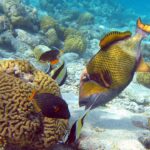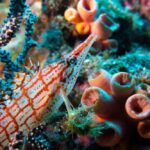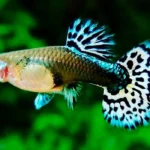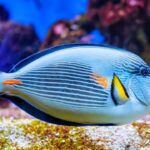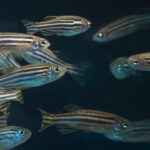The Hidden Key to a Healthy Aquarium
Cycle an Aquarium You can almost envision your future fish swimming elegantly across the tank. But hold on—before you run out to the pet store, there’s a vital procedure you must learn about: cycling your aquarium.
Behind the scenes, all healthy cycle an aquariums are driven by something intangible but vital: the nitrogen cycle. It’s the biological foundation of your fish tank, keeping your aquatic pets alive and your water safe. Learning about it isn’t for “advanced aquarists”—it’s something every fish keeper, from beginner to old hand, absolutely must know.
Here, at Cycle an Aquarium, we will tell you about the nitrogen cycle in the simplest, most human terms possible. No science talk, no complicated jargon. Just the honest stuff you need to maintain your underwater world.

What Does “Cycle an Aquarium” Really Mean?
Cycle an aquarium is the creation of healthy bacteria in your tank that convert fish waste into less toxic materials.
Why It Matters—A Cautionary Tale
Let’s say Alex, a new and enthusiastic fish keeper. He sets up his 20-gallon tank, adds some neon tetras the very same day, and overfeeds them. A couple of days later, his fish started to gasp at the surface, then die off one by one. The offender? Ammonia spikes.
This is the fate of many novices. Cycling your tank is not advice—it’s a necessity for a stable, safe environment. A well-cycled tank can sustain life for years, but an uncycled one can turn into a watery grave within days.
What You Need to Get Started
Cycling does not need to involve fancy gear, but there are some basic tools that will ease your trip:
Essentials
Aquarium Tank (any size)
Filter (biological filtration is key)
Heater (for tropical tanks)
Water Conditioner (to neutralise chlorine/chloramine)
Ammonia Source (for fishless cycling)
Test Kit (liquid tests for ammonia, nitrite, nitrate, ph)
Optional but Helpful
Bacteria Starter (bottled bacteria to jump-start the cycle)
Gravel or decorations from a mature tank (to “seed” your new tank)
Air Pump (to increase oxygen for beneficial bacteria)
The Three Methods of Cycle an Aquarium
There are a number of methods to cycle your tank. Each has its advantages and disadvantages, but all are intended to cultivate colonies of useful bacteria.
Fishless Cycling (Recommended)
This efficient and humane technique employs pure ammonia to mimic fish waste.
Step
Install your tank with all equipment operating.
Add ammonia (household, odourless) to 2-4 ppm.
Check the water every day. Observe for ammonia to decline and nitrite to increase.
Wait. When ammonia and nitrite reach zero and nitrates increase, your tank is cycled.
Do a significant water change (up to 50%) to lower nitrate levels before stocking fish.
Cycling with Fish (Not Recommended for Beginners)
This is an older system that employs live fish to generate ammonia. It’s dangerous and potentially inhumane because of ammonia/nitrite toxicity.
Steps
Add some hardy fish (such as zebra danios).
Watch water closely and perform regular water changes.
Monitor the nitrogen cycle development with test kits.
Timeframe: 6–8 weeks
Seeding from an Established Tank
Accelerate the process by stealing filter media, gravel, or water from a cycled, healthy tank.
Steps
Get your tank established.
Install “seeded” materials (sponges, bio rings, gravel).
Introduce ammonia or a few fish and test the water every day.
Timeframe: 1–3 weeks

Monitoring Progress with Water Testing
Consider your test kit a peephole to your aquarium’s hidden world. Here’s how it goes:
Typical Progression
Week 1: Ammonia increases.
Weeks 2–3: Nitrites become visible as ammonia decreases.
Week 4+: Nitrates show up, nitrites fall.
Cycle Complete: Ammonia = 0, Nitrite = 0, Nitrate = 5–40 ppm
Follow your numbers on a calendar or spreadsheet. Be patient, and patience is your best friend in this case.
Speeding Things Up—Safely
Rushing to add fish? These safe shortcuts are here:
Add bottled bacteria: Brands like Seachem Stability or Tetra SafeStart can jumpstart the cycle.
Increase oxygen: Beneficial bacteria thrive in well-oxygenated water.
Raise temperature: Slightly warmer water (78–82°F) can speed up bacterial growth.
Seed from another tank: Already covered, but worth repeating!
Troubleshooting Common Cycling Issues
Cycling isn’t always a smooth ride. Here’s how to navigate common stumbling blocks:
Problem 1: “My ammonia won’t drop!”
Solution: Check your ammonia source (should be pure, no surfactants).
Confirm the filter is running 24/7.
Add bottled bacteria.
Problem 2: “Nitrite is stuck at high levels.”
Solution: Be patient. It can stall for days.
Increase aeration and temperature slightly.
Problem 3: “My nitrate levels are off the charts.”
Solution: Do a large water change (50–75%) before adding fish.
Problem 4: “I added fish too early.”
Solution: Perform daily 25–50% water changes. Add Seachem Prime and bottled bacteria.
After Cycling—What’s Next?
After your cycle:
Introduce fish gradually: Begin with a small number, and gradually add more over weeks.
Keep water quality: Testing every week and 20–30% weekly water changes are critical.
Feed modestly: Particularly in the initial days.
Observe behavior: New fish will be shy but become more active later.

Real Stories from New Aquarists
Emma, 29 – “I thought I could skip it”
I lost five guppies before I even heard of cycling. Now, I do fishless cycles and test like a religion. Haven’t lost a fish in two years!
Jay, 42 – “Seeding made all the difference”
My friend sent me some filter media from his tank. I cycled in under 10 days. It’s like swapping sourdough starter—but for aquariums.
Lila, 18 – “Bacteria in a bottle saved my betta”
I introduced my betta too soon. Ammonia spiked. I used bottled bacteria and Prime daily. He made it through, and now he’s thriving.
Cycling for Special Setups
Cycling Planted Tanks
Plants use ammonia and nitrate, stabilising the tank. But you still must cycle. Plants can help accelerate it slightly.
Cycling Saltwater Tanks
Same idea, but saltwater bacteria are not the same. Use live rock or sand to assist cycling. Test salinity as well as ammonia/nitrite/nitrate.
Cycling with Shrimp or Snails
These animals are more delicate. Ensure your cycle is finished before introducing them. Nitrates below 20 ppm are ideal.
Myths and Misconceptions
“My water is clear, so it’s safe.”
Not true. Toxins are invisible—only testing can confirm.
“Bacteria live in water.”
False. Most beneficial bacteria live on surfaces like filter media and substrate.
“You don’t need to cycle small tanks.”
Even a 2-gallon tank needs cycling. Smaller tanks are harder to stabilize.
“Goldfish are good starter fish.”
They produce a lot of waste and need large, cycled tanks.

Conclusion
Cycle an aquarium may appear to be a technical obstacle at first, but in reality, it’s the key to everything that comes next. All crystal-clear tanks, all elegant fish, all successful coral or verdant plants owe their success to this intangible but essential process.
When you cycle your tank correctly, you’re doing more than getting water ready—you’re setting the stage for life. You’re establishing stability, equilibrium, and harmony in a world that thrives below the surface. It’s your very first serious deed as a capable aquarist, and it says a great deal about how much care you’re willing to extend to your aquatic friends.
Yes, cycling takes time. Yes, it requires patience, testing, and perhaps a little bit of frustration. But what you have in return is something that lasts: a healthy aquarium where fish don’t merely exist— they thrive.
So, as you stand before your tank and set to take the next step, keep this in mind—the cycle is the gateway to all that is to follow. Welcome to it, and you’re not merely keeping fish. You’re creating an ecosystem, constructing a sanctuary, and designing a world of your own that speaks volumes of your care and awe.
FAQs
How long does it take to cycle an aquarium?
Usually, Cycle an Aquarium in a new tank takes 4 to 6 weeks. With the help of beneficial bacteria supplements or seeding from a mature tank, it can be done in 1–3 weeks.
Can I add fish while cycling my tank?
Yes, but it’s not recommended for the beginner. Cycling with fish puts them at risk of ammonia or nitrite poisoning. If you must do this, use hardy fish, test the water every day, and perform frequent water changes. A better alternative is fishless cycling.
What should my water parameters be when cycling is complete?
Ammonia: 0 ppm
Nitrite: 0 ppm
Nitrate: 5–40 ppm
These figures indicate your tank is cycled and ready for fish.
Can I use tap water to cycle an aquarium?
Yes, cycle an aquarium; just be sure to dechlorinate it using a water conditioner such as Seachem Prime or API Tap Water Conditioner. Chlorine and chloramine will kill the good bacteria.
These figures indicate your tank is cycled and ready for fish.


